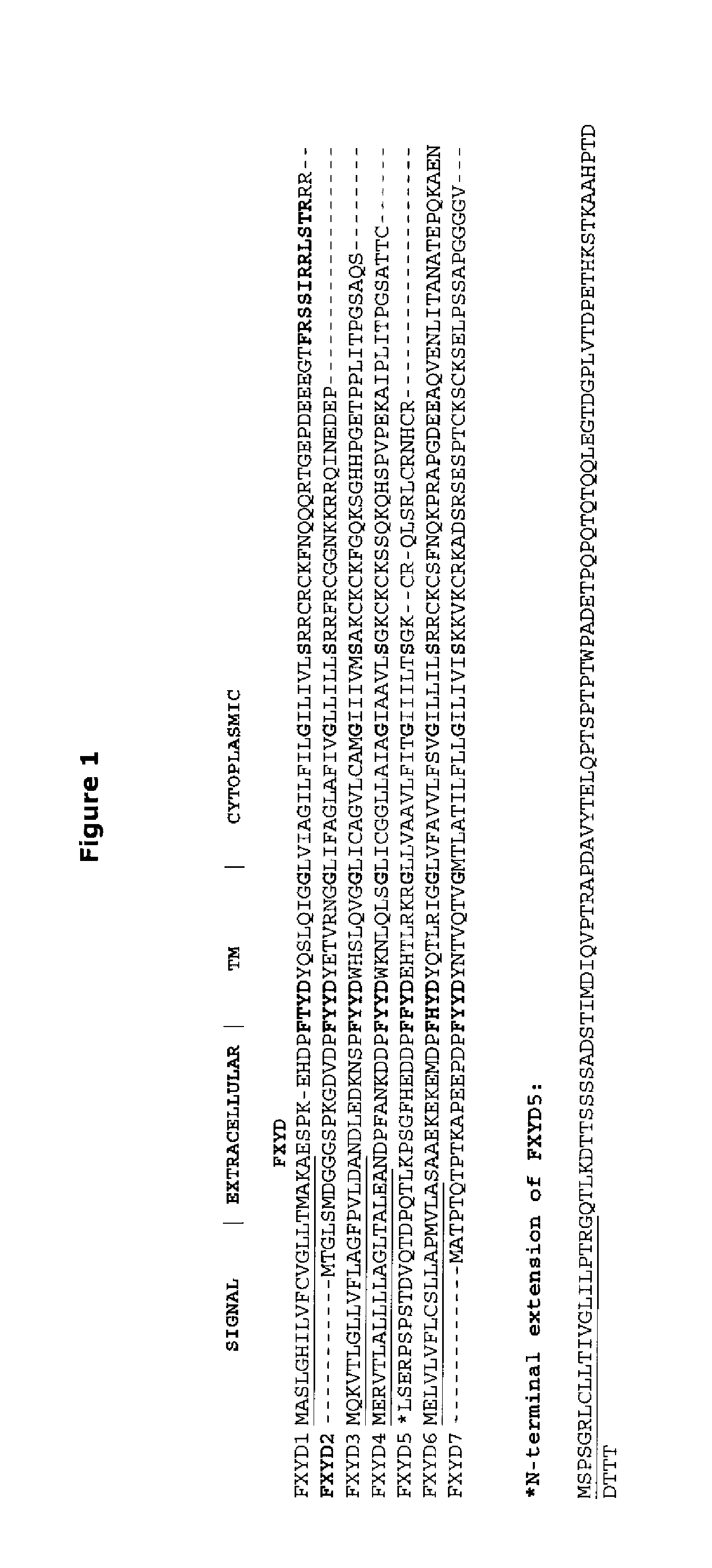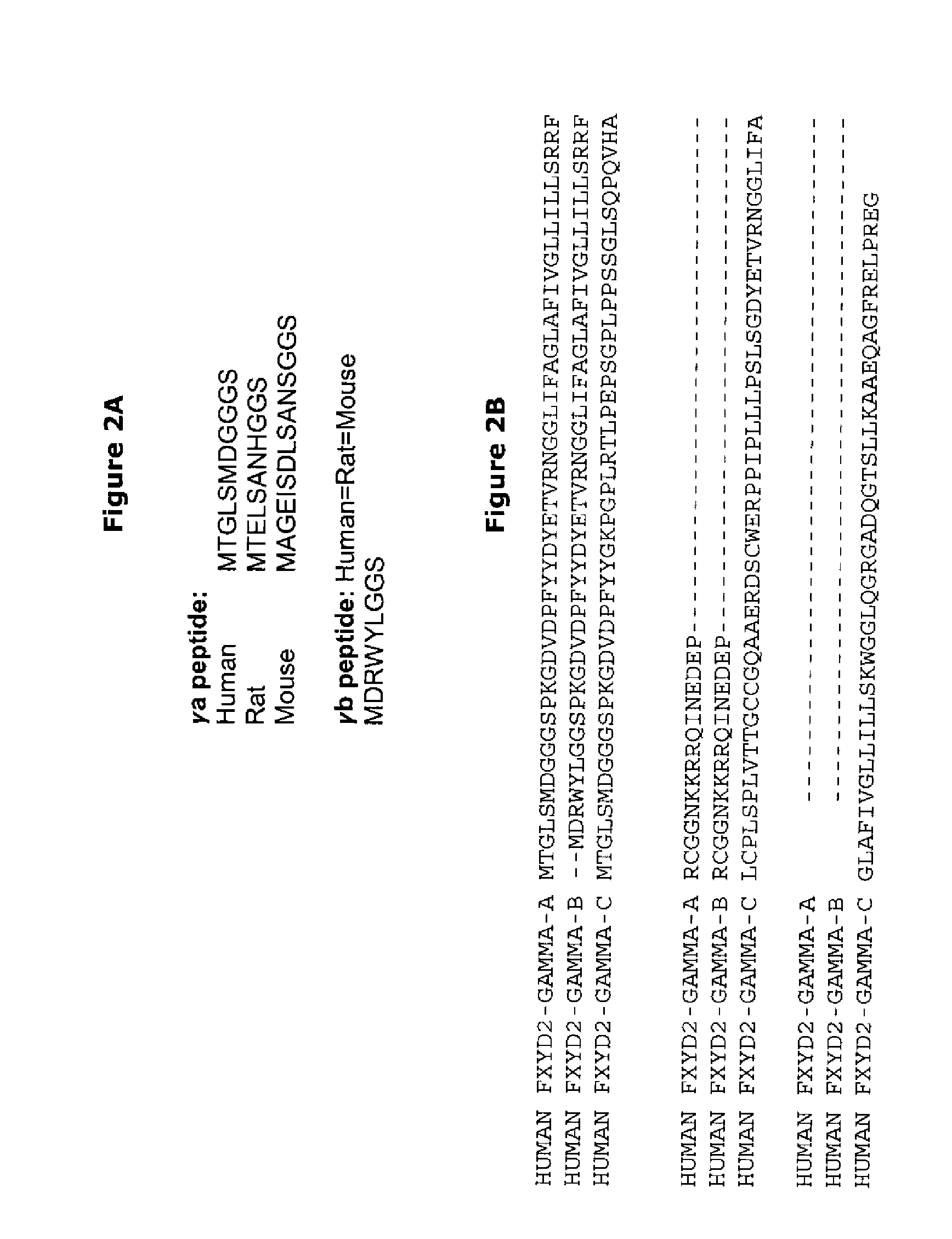New plasma membrane biomarkers preferentially expressed in pancreatic beta cells useful in imaging or targeting beta cells
a pancreatic beta cell and plasma membrane technology, applied in the field of medical devices, can solve the problems of imposing a heavy burden of morbidity and premature mortality, severe long-term complications, end-stage renal failure and neuropathy, etc., and achieves good specificity and selectivity, the effect of assessing the effectiveness
- Summary
- Abstract
- Description
- Claims
- Application Information
AI Technical Summary
Benefits of technology
Problems solved by technology
Method used
Image
Examples
example 1
Selection Strategy for the Identification of Beta Cell Specific Plasma Membrane proteins
[0176]The strategy used in these examples is depicted in FIGS. 1 and 2. The pancreas is composed of 1-2% of tiny endocrine islets of Langerhans which are scattered in the exocrine tissue. The exocrine pancreas consists of acinar cells and a network of ducts. Islets contain insulin secreting beta cells and non beta cells, e.g. the glucagon secreting alpha cells, pancreatic polypeptide producing PP cells and somatostatin secreting delta cells. Pancreatic beta cells are selectively destroyed by an autoimmune assault in T1D, and there is also evidence that beta cell loss is present in long term T2D, albeit at a lower level than in T1D. Gene expression data on pancreatic islets and on pancreatic beta cells have been obtained in the last 8 years. The methods used are microarray analysis and massive parallel signature sequencing (a procedure that detects gene expression based on sequencing of signatures...
example 2
Validation of the Islet Specific Expression of the Selected Biomarkers
[0178]A. Marker FXYD2:
[0179]MPSS data obtained in human islets compared to expression in 32 human tissues derived from the LICR MPSS dataset; only expression levels above 5 tpm are shown.
[0180]A.1 Introduction:
[0181]The gamma-subunit of the Na, K-ATPase (FXYD2, ATP1G1, HOMG2, MGC12372) is a single-span membrane protein that regulates the Na, K-ATPase by modifying its kinetic properties. The gamma-subunit belongs to a family of 7 FXYD proteins which are tissue specifically expressed (FIG. 1 after Cornelius F et al, 2003). FXYD2 is abundantly expressed in the proximal and distal tubules and in the medullary thick ascending limb of Henle of the kidney (Arystarkhova E et al 2002, Pihakaski-Maunsbach K et al 2006). Two splice variants (gamma-a (SEQ ID NO: 6) and gamma-b SEQ ID NO:7) have been detected in rat and human (Arystarkhova E et al 2005) while the third splice variant gamma-c has been characterized only in mous...
example 3
Confirmation of a Marked Decrease in FXYD Expression in the Pancreas of Two Type 1 Diabetic Patients
[0297]Expression of FXYD2 gamma-a is drastically decreased in islets from type 1 diabetes patients (CO and TELF; these codes identify two patients, deceased respectively 3 days and 5 years after the diagnosis of type 1 diabetes) compared to normal pancreas (CTRL). Consecutive sections of 3 μm were taken and stained with SPY393 antibody, anti-insulin antibody or anti-glucagon antibody. In the TELF pancreas, beta cells can not be detected based on insulin staining; this was correlated with disappearance of FXYD2 staining. In the CO pancreas, beta cells can not be detected based on insulin staining but a very faint staining of FXYD2 remained (cf. FIG. 12, magnification 1000×).
[0298]FIG. 13 shows the quantification of the FXYD2 gamma-a in islets from type 1 diabetes patients: 20 Langerhans islets / case were quantified; % of stained tissue area (Labelling Index—LI) and mean staining intensi...
PUM
| Property | Measurement | Unit |
|---|---|---|
| Digital information | aaaaa | aaaaa |
| Volume | aaaaa | aaaaa |
| Fraction | aaaaa | aaaaa |
Abstract
Description
Claims
Application Information
 Login to View More
Login to View More - R&D
- Intellectual Property
- Life Sciences
- Materials
- Tech Scout
- Unparalleled Data Quality
- Higher Quality Content
- 60% Fewer Hallucinations
Browse by: Latest US Patents, China's latest patents, Technical Efficacy Thesaurus, Application Domain, Technology Topic, Popular Technical Reports.
© 2025 PatSnap. All rights reserved.Legal|Privacy policy|Modern Slavery Act Transparency Statement|Sitemap|About US| Contact US: help@patsnap.com



